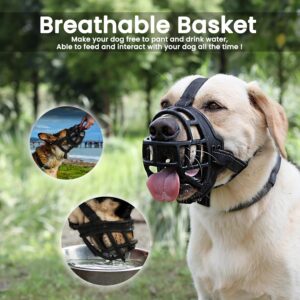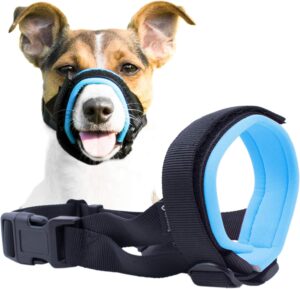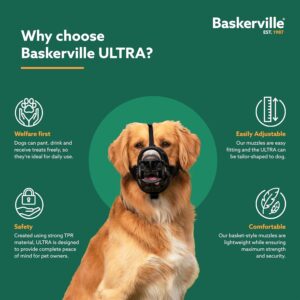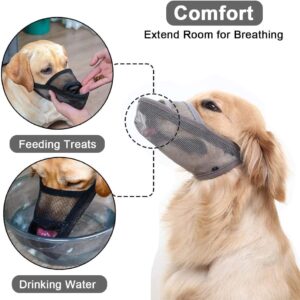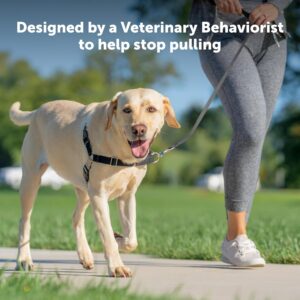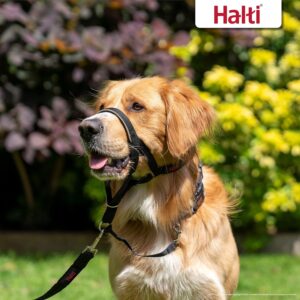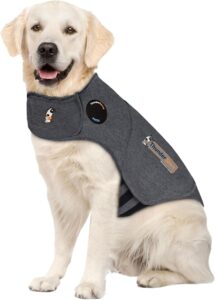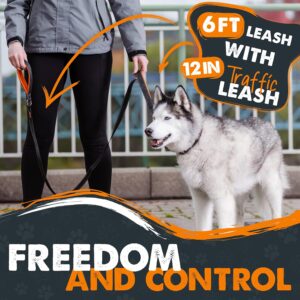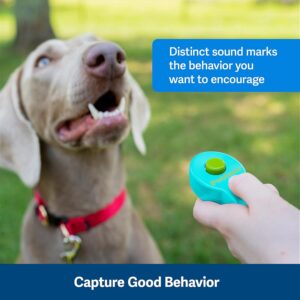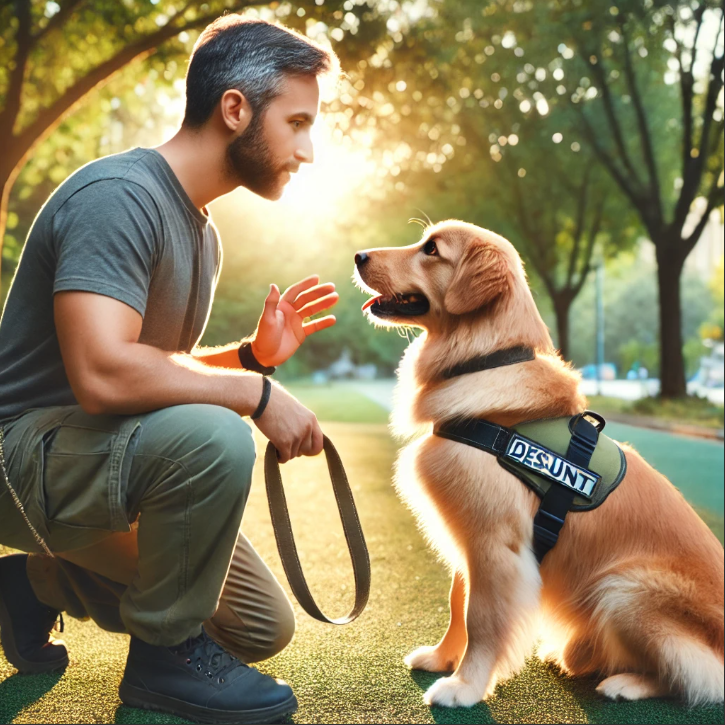 |
Key Points:
|
| Dogs are cherished companions, but not all of them respond calmly to their surroundings. Some struggle with reactivity, which can appear as barking, lunging, growling, or even aggressive behavior when faced with certain triggers. These reactions can be tough for both the dog and the owner to handle. However, with the right understanding, patience, and training techniques, you can help your dog manage reactivity and lead a more peaceful life. | |
What is Reactivity?
Reactivity in dogs is an overreaction to specific triggers. A reactive dog might bark excessively, lunge at people or other dogs, or display aggressive body language in response to perceived threats or overstimulation. It’s important to understand that reactivity is different from aggression. Reactive behavior is often driven by fear, excitement, or frustration, whereas aggression typically stems from a desire to cause harm.
Common Triggers for Reactive Dogs
- Other Dogs: Some dogs may feel anxious or frustrated when encountering other dogs.
- Strangers: Fear of unfamiliar people can easily set off reactive behaviors.
- Loud Noises: Sudden, loud sounds like fireworks, thunderstorms, or even traffic can cause anxiety.
- Fast-Moving Objects: Joggers, bicycles, or even cars can be triggered.
- Unfamiliar Environments: New or busy settings may overwhelm your dog.
Why Do Dogs Become Reactive?
Reactivity often stems from fear, poor socialization, past traumatic experiences, or genetics. For instance, a dog that wasn’t properly socialized during puppyhood may grow up to fear or be overstimulated by unfamiliar things. Similarly, a dog that had a bad experience with another dog may develop a reactive response when seeing any dog.
Signs of a Reactive Dog
Recognizing the signs of reactivity is critical to preventing the behavior from escalating. Here are some common signs that your dog might be reactive:
- Intense Staring or Fixating: If your dog locks their eyes on a person, dog, or object, this could indicate reactivity.
- Growling or Barking: These vocalizations, especially when persistent or intense, indicate stress or fear.
- Lunging or Pulling: A reactive dog might pull on the leash to move toward or away from a trigger.
- Pacing or Panting: When stressed, a dog might pace nervously or pant excessively, even if it’s not hot.
- Tail Position: A stiff, raised tail or a tucked tail can signal distress.
Managing a Reactive Dog
Managing a reactive dog takes dedication, consistency, and a clear understanding of what triggers their reactions. The following strategies can help you reduce your dog’s reactivity and improve their behavior over time.
1. Identify and Understand Triggers
To manage your dog’s reactivity, start by identifying what triggers their behavior. Is it other dogs, people, certain sounds, or unfamiliar environments? Pay close attention to your dog’s reactions during walks or interactions and make note of what causes them to react. Understanding these triggers will allow you to better manage or avoid them, while working on desensitization strategies.
2. Desensitization and Counter-Conditioning
Desensitization is a slow and steady process where your dog is gradually exposed to the trigger in small, manageable increments. Counter-conditioning helps change your dog’s emotional response to the trigger. For instance, if your dog reacts strongly to other dogs, begin by introducing them to a safe distance where they feel comfortable, then reward them for calm behavior.
Steps for Desensitization:
- Begin at a distance where your dog can see the trigger but remains calm and doesn’t react.
- Gradually decrease the distance over several training sessions.
- Offer your dog treats, toys, or praise as a reward when they behave calmly.
- Increase exposure over time until your dog can tolerate the trigger without reacting.
3. Use of Positive Reinforcement
It’s essential to reward your dog for staying calm to teaching them how to respond appropriately to triggers. Positive reinforcement encourages your dog to associate the trigger with good things rather than fear or stress. Use high-value treats (like chicken or cheese) when your dog exhibits calm behavior around their trigger.
Training Tip: Use a clicker or a specific word (such as “yes!”) to mark the exact moment your dog behaves correctly. This helps your dog understand which behavior is being rewarded.
4. Teach Focus Commands
Training your dog to focus on you during walks or in stressful situations is an effective way to shift their attention away from the trigger. Commands such as “watch me,” “leave it,” or “focus” can help keep your dog’s attention on you rather than on the trigger.
Steps to Teach Focus:
- Hold a treat near your face and say, “Watch me.”
- Reward your dog with a treat whenever they make eye contact.
- Practice this in low-distraction environments before using it during walks or around triggers.
5. Manage Your Environment
When you’re managing your dog’s reactivity, controlling the environment is key. Try to avoid situations where your dog will be overwhelmed by multiple triggers. For instance, if your dog is reactive to other dogs, choose quieter walking paths or go for walks during off-peak times when fewer dogs are around. Gradually work your way up to more stimulating environments as your dog’s behavior improves.
6. Use of Appropriate Equipment
Choosing the right equipment can greatly improve your ability to manage a reactive dog. Tools such as a front-clip harness or a head halter can provide better control and prevent pulling during walks.
| Tool | Description | Benefits |
| Front-Clip Harness | Attaches to the dog’s chest to provide better control during walks. | Prevents pulling, offers more control, and reduces the chance of lunging. |
| Head Halter | Fits around the dog’s head and muzzle, allowing gentle control of the head’s movement. | Helps redirect the dog’s focus away from the trigger, provides more control without causing harm. |
| Clicker | A small device that makes a clicking sound when pressed, used in positive reinforcement training. | Marks the exact moment of correct behavior, making training more precise and clear for the dog.
|
| Muzzle | A soft muzzle that can prevent biting while allowing the dog to breathe and drink. | Useful for highly reactive dogs to ensure safety during training or exposure to triggers. |
| Long Leash | A leash longer than a standard one (usually 15 to 30 feet). | Allows the dog more freedom to explore during desensitization training while still maintaining control. |
7. Stay Calm
Dogs are sensitive to their owner’s emotions. If you remain calm, your dog is more likely to stay calm. On the other hand, if you’re feeling tense or anxious, your dog is likely to sense your stress and become even more reactive. Stay composed, use a calm voice, and maintain confidence when working with your dog.
8. Use Distance to Your Advantage
The closer your dog is to its trigger, the more intense its reaction will likely be. Using distance to your advantage can help keep your dog below its reactivity threshold. Over time, gradually reduce the distance between your dog and the trigger, but always allow enough space to prevent a full-blown reaction.
Dealing with Specific Triggers
Reactivity to Other Dogs
If your dog is reactive to other dogs, gradual exposure and positive reinforcement are key. Start by walking your dog in areas where it can observe other dogs from a distance without becoming overwhelmed. Over time, the distance will decrease, and calm behavior will be rewarded. If your dog becomes reactive, increase the distance and try again.
Reactivity to Strangers
Desensitizing your dog to strangers requires patience. Start by having your dog observe strangers from a distance while rewarding them for staying calm. Eventually, you can ask a stranger to offer your dog treats or simply ignore your dog to reduce fear or excitement.
Reactivity to Loud Noises
For dogs that react to loud noises like fireworks or thunderstorms, desensitization can help. Use recordings of the noises at a low volume and pair them with rewards. As your dog becomes more at ease, slowly raise the volume.
Professional Help
If your dog’s reactivity is severe, it might be helpful to seek professional assistance. A certified dog trainer or behaviorist can evaluate your dog’s unique needs and develop a personalized training plan. Additionally, they can help with more advanced techniques like behavior modification or anxiety-reducing exercises.
Patience and Consistency Are Key
Working with a reactive dog takes time. It’s not an overnight process, and setbacks are normal. Consistency is crucial—stick to your training plan, remain patient, and celebrate small victories. Over time, you’ll notice improvements in your dog’s ability to handle triggers more calmly.
Long-Term Management
While you may not completely eliminate your dog’s reactivity, you can significantly reduce it and teach your dog healthier ways to cope with stressors. Regular training, positive reinforcement, and a nurturing environment can help your dog feel safer and boost their confidence. Most importantly, advocate for your dog—understand their limits and ensure they are set up for success in every situation.
Top 10 Must-Have Amazon Products to Manage and Train Your Reactive Dog
Conclusion
Reactivity in dogs can be challenging, but it can be managed and improved with the right approach. By recognizing what triggers your dog’s reactivity and applying positive reinforcement, focus training, and gradual desensitization, you can help your dog feel more at ease and build confidence. With patience and consistent effort, your dog will become calmer, allowing it to enjoy a more relaxed and fulfilling life.


